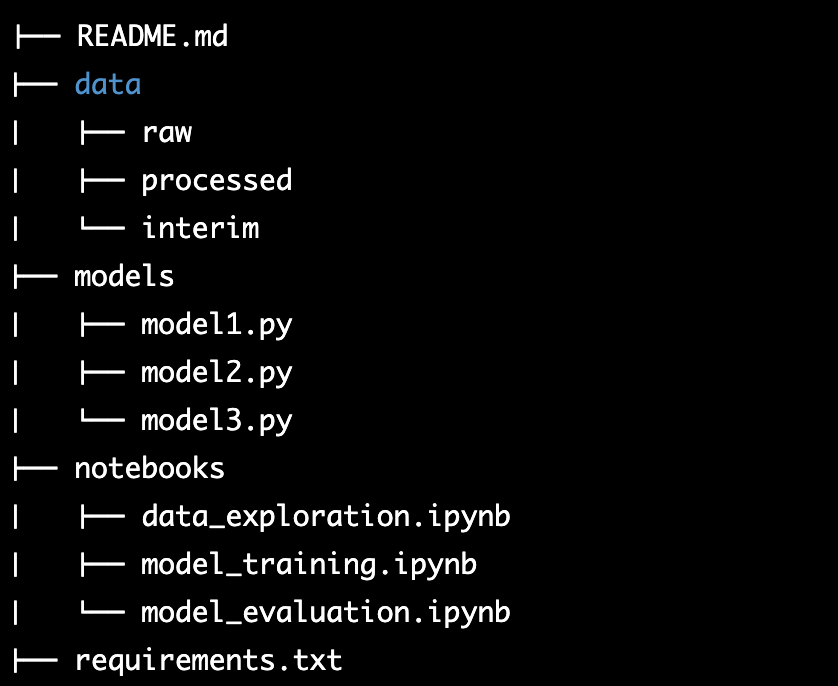Writing maintainable ML code
Developing Machine Learning Models for Production

Sinan Ozdemir
Data Scientist, Entrepreneur, and Author
Project structuring
- Organize project files into a logical structure
- Group related files together
- Organize data sets and ML models in separate folders
- Ensure files are properly named and labeled

Sample project structure
Sample project directory with a README file, requirements file and three subfolders: data, models, notebooks

- README.md: Explains the purpose of the repository and how to use it.
- requirements.txt: Lists all dependencies
- data: contains data-related files, including raw data and processed data
- models: contains all model-related files, including scripts for creating models.
- notebooks: contains notebooks for data exploration, model training, and model evaluation.
Code versioning
- Use a version control system like git to keep track of changes to the code
- Allows for rollback of changes if necessary
- Can help identify the source of bugs and errors
- Allows for parallel work

Documentation
- Document code and project structure
- Explain the purpose of each file and function
- Describe how to use the code
- Include instructions on how to deploy the ML model

Adaptability of code
- Easier to understand, modify, and update
- Reduces the time and effort required to make changes to the codebase
- More easily adapt to data + code + requirements changes
- Less prone to bugs
- Easier to integrate new features or technologies as needed
- Essential for building ML applications that can evolve and adapt over time
Let's practice!
Developing Machine Learning Models for Production

